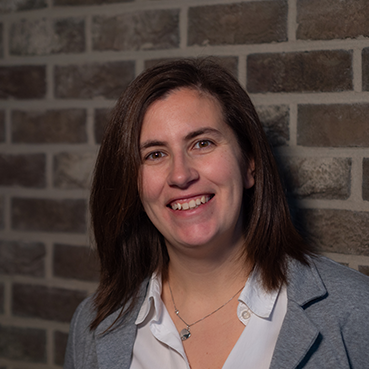Susana Rocha

Assistant Professor
email Susana Rocha
CV July 2025
Biosketch
I am currently tenure track assistant professor at the Molecular Imaging and Photonics division of the Chemistry Department of KU Leuven, Belgium, where my group develops advanced microscopy and nanoscopy techniques to address biologically relevant research questions. Currently we are applying such methods to characterize new biomimetic hydrogels and unravel the role of mechanical cues in cellular behavior at a molecular level.
My research interest has always been situated at the crossroad between biology, chemistry and nanotechnology. After finishing the Chemistry degree in one of the top universities of Portugal, my interest in single molecule microscopy led me to join the group of Prof. Johan Hofkens at KU Leuven. There I have established single particle tracking and super resolution fluorescence microscopy (PALM/STORM/PAINT based approaches).
During the first years of my post-doctoral career I focused on developing new methods to perform super-resolution fluorescence imaging in 3D using a multi-plane wide field microscope. For this project I have received a personal post-doctoral grant and a research project from the ‘Fonds Wetenschappelijk Onderzoek’ (FWO). While investigating the dynamics of polymer blends in 3D, my interest was driven to the use of synthetic materials as scaffold for cell culture and tissue engineering.
To start investigating biomimetic materials, I performed a research stay the group of Prof. Paul Kouwer (Radboud University, Nijmegen, The Netherlands) in 2017. From the discussions with synthetic chemists and cell biologists, I realized that despite being mainly characterized in bulk, the knowledge of the structural and mechanical properties of biomimetic materials at the micrometer scale is crucial for the rational design of new materials. Given my expertise in microscopy, I returned to Leuven to establish a microscopy toolbox to perform the characterization of polymer gels, at the subcellular and molecular scale. Characterization at these length scales is essential to fully understand the impact of mechanics on cellular behavior and extend the use of synthetic materials in biomedical applications. For instance, as personalized medicine moves forward, new drugs and biological products will need new material-based devices to deliver them, and these devices require biomaterials capable of interacting with the patient cells to achieved the desired outcome.
Currently I am using polyisocyanopeptide (PIC) based hydrogels as a model system for the naturally occurring fibrous networks. This bioinspired material presents unique mechanical properties and is biocompatible, holding great potential as a biomimetic material. In addition to the structural and mechanical characterization of these gels, I am following how the presence of cells affects their properties during time, in 3D, using (super-resolution) fluorescence imaging and 2-point micro-rheology. In addition to the development of this advanced microscopy-based toolbox for material characterization, I am also investigating how the biophysical properties of the matrix affect cellular behavior. Preliminary observations have shown that most cell types in PIC-based hydrogels grow as spherical multicellular aggregates. However, some fibroblasts are able to physically remodel the matrix. Cancer associated fibroblasts, crucial in the development of cancer metastasis, display this property. In order to understand the molecular mechanism behind the pronounced remodeling of the matrix by these cells, and the role of the mechanical properties of the matrix in cancer progression, I have established a collaboration with Dr. Rodrigo Barderas (Instituto Salud D.Carlos III, Madrid, Spain), expert in proteomics and cancer metastasis. In my future I want to ally material characterization at the micrometer scale with the influence of mechanical and structural properties of the matrix in the biological evaluation of cancer models. There is great interest in developing both in vitro models, namely organoids from patient biopsies, and in vivo models, using for instance, implants in mice, for the development of personalized cancer therapies. In both cases, the material used as a scaffold plays a central, yet largely unknown, role. Investigation of the mechanisms determining cell fate with molecular precision using bioinspired materials will provide new valuable insights for cell biologists, physiologists and material engineers.
Originally from Portugal, I first came to Leuven for an Erasmus exchange and fell in love with microscopy — a passion that continues to drive my work today. My teaching covers both the Bachelor in Biochemistry (Dynamic Biochemistry and Chemical Biology) and the Master in Nanotechnology (Nanostructure of Biomacromolecules), and I remain committed to bringing science closer to students, peers, and the public.